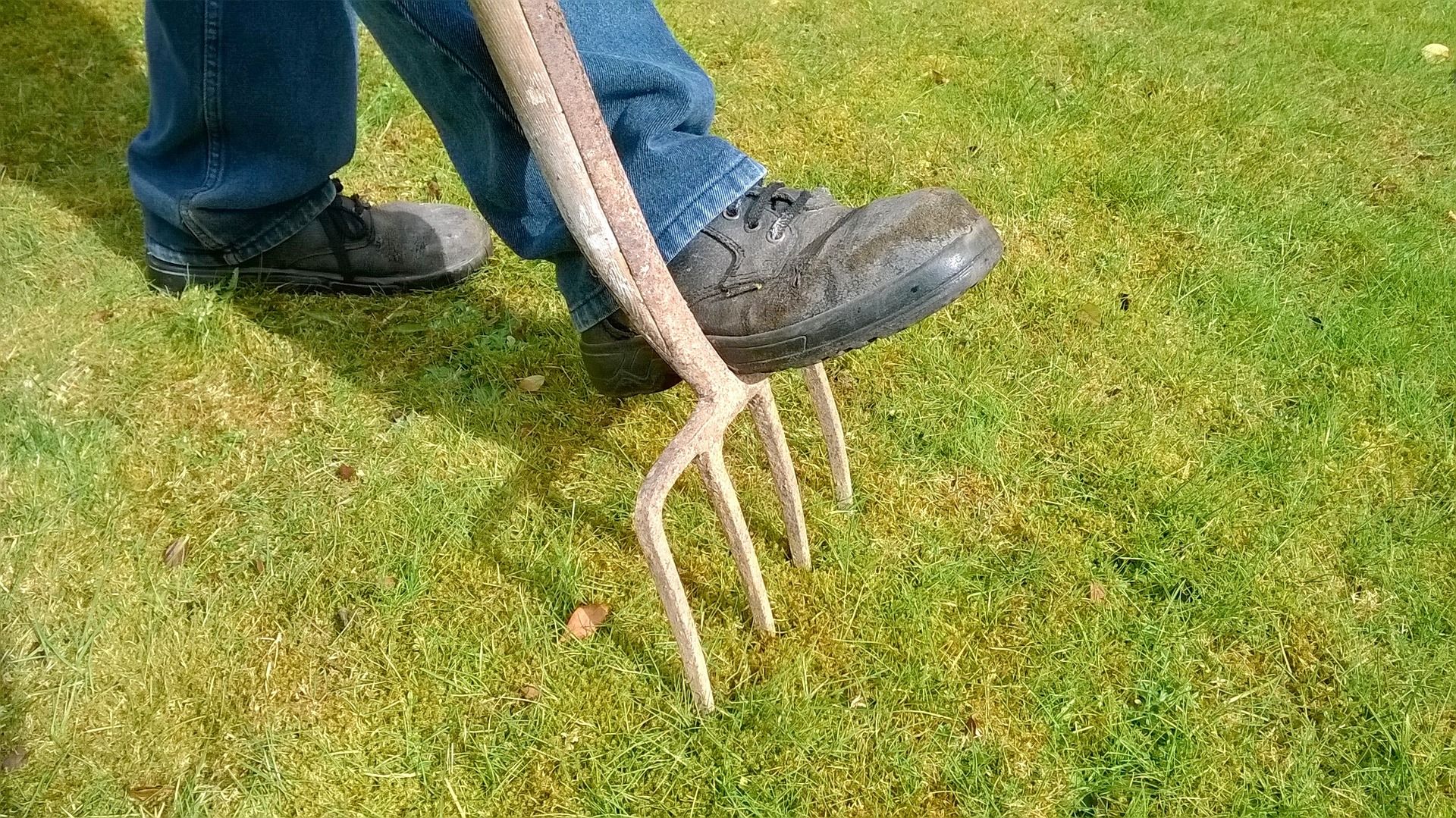How Often Should You Aerate Your Lawn?
Maintaining a lush and green lawn requires more than just regular mowing and watering. One important task that often gets overlooked is aerating your lawn. Aerating, or perforating the soil with small holes, can have a big impact on the overall health and appearance of your lawn.
You've probably wondered whether you're aerating your lawn as often as you should. Factors such as soil type, grass species, and foot traffic frequency significantly influence the ideal aeration schedule for your lawn.
While the general rule might lean towards annual aeration, your lawn's specific needs could dictate a different timetable.
How often should you aerate your lawn? To ensure your lawn remains vibrant and healthy, let's explore what considerations you should take into account to determine the right aeration frequency for your green oasis.

Understanding Lawn Aeration
Lawn aeration, a crucial horticultural practice, involves perforating the soil with small holes to allow air, water, and nutrients to penetrate the grass roots, enhancing growth and vitality. You're tasked with understanding this process to maintain a healthy lawn effectively. Aeration mitigates soil compaction, a common issue in many lawns, which restricts the flow of essential resources. Compacted soil hampers root development, diminishing your lawn's ability to absorb water and nutrients.
You'll employ two primary tools for this task: spike aerators and plug aerators. Spike aerators simply punch holes into the ground, while plug aerators remove a core or plug of grass and soil from the lawn. Plug aeration is more effective for relieving compaction and facilitating the exchange of air and nutrients in the soil.
It's imperative you recognize the optimal timing for aeration, which is typically during your lawn's peak growing season. For cool-season grasses, early fall or spring are ideal, whereas warm-season grasses benefit most from late spring aeration. This timing ensures the grass can recover quickly and fully utilize the increased access to essential resources.
Significance of Soil Type
Understanding the type of soil in your lawn is crucial for optimizing aeration practices and ensuring the health and growth of your grass. Soil types range from sandy to clay-heavy, each with distinct characteristics affecting water retention, nutrient availability, and air circulation.
In sandy soils, water and nutrients can easily percolate, leading to quicker drainage but potentially starving plants of essential nutrients and moisture. Aeration in these conditions can help increase nutrient retention and improve water usage efficiency.
Conversely, clay soils exhibit high nutrient content but poor drainage and aeration. The denser structure of clay soil means it's more prone to compaction, which can significantly hinder root growth and water infiltration. For lawns on clay soil, aeration is particularly beneficial, as it breaks up compact layers, allowing roots to expand and facilitating better moisture and air movement.
Loamy soil, a balance between sandy and clay, is considered ideal for most grass types due to its optimal structure for water retention, nutrient availability, and aeration. However, even with loamy soil, periodic aeration is recommended to prevent compaction from foot traffic and maintain its ideal structure.
Assessing Grass Species
Evaluating the specific grass species in your yard is a critical step towards customizing aeration practices for optimal lawn health and vigor. Different grass varieties have unique root systems and growth patterns, which significantly influence their aeration needs. For instance, grasses like Kentucky bluegrass and Bermuda grass possess rhizomatous or stoloniferous growth habits, respectively, creating dense thatch layers and interconnected root systems. Such characteristics necessitate regular aeration to prevent soil compaction and ensure nutrient penetration.
Conversely, fine fescues, which have a bunch-type growth, may require less frequent aeration due to their less aggressive root systems. Understanding the growth cycle of your grass is also paramount. Cool-season grasses, thriving in spring and fall, benefit most from aeration during these periods of active growth. Warm-season grasses, on the other hand, peak in summer and thus, aeration is most effective when conducted in late spring or early summer.
Moreover, the depth and density of the root system of your grass species directly impact the aeration method chosen. Deep-rooting grasses might benefit from core aeration that removes plugs of soil, allowing for deeper air, water, and nutrient penetration, while shallow-rooted varieties may only need spike aeration for improved air exchange. Tailoring aeration practices to the specific needs of your grass species ensures the longevity and health of your lawn.
Impact of Foot Traffic
While assessing grass species provides a foundation for tailored aeration practices, it's also crucial to consider the impact of foot traffic on your lawn's health and aeration needs. High foot traffic compresses soil, reducing its porosity and limiting the flow of air, water, and nutrients to grass roots. This compaction hampers root growth, diminishes grass vigor, and makes your lawn more susceptible to diseases and pest infestations.
You'll observe signs of compaction in areas with heavy foot traffic, such as pathways through the lawn or play areas. These zones may show uneven growth, thinning grass, or increased weed proliferation, as compacted soil favors certain weed species over healthy grass growth. It's these areas that often require more frequent aeration to alleviate soil compaction and promote root expansion.
Understanding the level of foot traffic your lawn endures is essential in determining your aeration strategy. Areas subjected to light use may thrive with annual aeration, while those bearing regular or heavy foot traffic might need semi-annual aeration to maintain optimal health. This targeted approach ensures each section of your lawn receives the care necessary to flourish despite the pressures exerted by foot traffic.
Ideal Aeration Frequency
Determining the ideal frequency for aerating your lawn hinges on several factors, including soil type, grass species, and the level of foot traffic it endures. For lawns planted on clay-heavy soil, you'll find that aeration is needed more frequently, typically once every year, due to its compact nature. In contrast, if your lawn consists of sandy soil, you can extend this period to once every two years since sandy soils naturally maintain better aeration.
The type of grass also plays a crucial role. Cool-season grasses, thriving in northern climates, benefit most from fall aeration. This timing allows them to recover and grow robustly. Warm-season grasses, prevalent in southern regions, are best aerated in late spring or early summer, aligning with their peak growth period for optimal recovery and thickening.
Foot traffic is another critical consideration. Lawns that serve as a playground or common area endure compacting forces daily. If your lawn doubles as a high-traffic area, increasing aeration to twice per year can significantly alleviate soil compaction, promoting healthier grass roots.
Aeration Mistakes to Avoid
Despite its many benefits of Aeration, there are several mistakes that can be made when aerating your lawn or garden. Here are some common aeration mistakes to avoid.
1. Aerating too often: One of the most common mistakes that people make when it comes to aerating their lawn or garden is aerating too often. Aeration should only be done when the soil is compacted, typically once or twice a year. Aerating too frequently can actually do more harm than good, as it can disrupt the delicate balance of microorganisms in the soil.
2. Aerating when the soil is too wet or too dry: Another common mistake is aerating the soil when it is either too wet or too dry. Aerating wet soil can cause the soil to become more compacted, while aerating dry soil can damage the roots of your plants. It is best to aerate when the soil is slightly moist, but not saturated.
3. Using the wrong equipment: Using the wrong equipment for aeration can also lead to poor results. It is important to use the right type of aerator for your specific lawn or garden. For smaller areas, a manual core aerator may be sufficient, while larger areas may require a gas-powered aerator. Using the wrong equipment can result in uneven aeration, which defeats the purpose of the process.
4. Ignoring the compaction problem: Some people make the mistake of aerating their lawn or garden without addressing the underlying issue of compaction. If your soil is compacted, simply aerating it once will not be enough to solve the problem. It is important to also take steps to prevent compaction in the future, such as avoiding heavy foot traffic or using heavy machinery on the soil.
5. Failing to overseed after aeration: After aerating your lawn or garden, it is important to overseed to promote healthy growth and fill in any bare spots. Failing to overseed can result in a patchy lawn or garden, as the aeration process can disturb existing grass or plants. Make sure to overseed immediately after aerating for the best results.
Need a Help of a Landscaping Professionals?
While aerating your lawn is a beneficial practice, it can be a time-consuming and labor-intensive task. That's why it's a good idea to hire a professional lawn care company like Lone Oak Lawns to help you with this important job.
Hiring
Lone Oak Lawns to help you aerate your lawn is a smart investment in the health and beauty of your outdoor space. With their expertise, professional equipment, and commitment to customer satisfaction, you can trust that your lawn will be in good hands. Contact Lone Oak Lawns today to schedule an aeration service and give your lawn the care it deserves.








